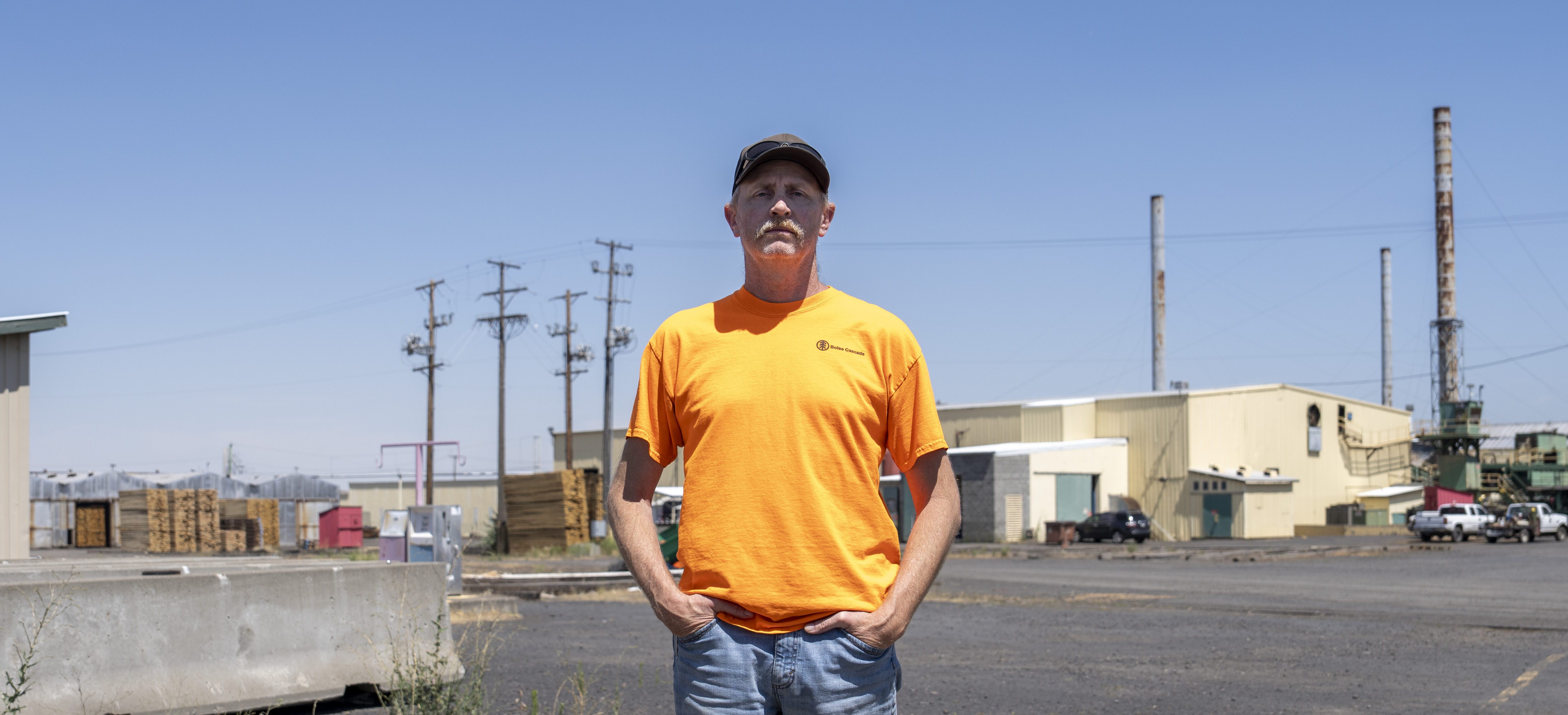More Oregonians catching coronavirus because the virus is spreading more, not just because of increased testing
Published 12:45 pm Sunday, June 21, 2020

- A woman walks into a convenience store on Friday, June 19, 2020, in Salem, Ore, while in the foreground a sign anticipates people not wearing masks against spread of the coronavirus. Oregon Gov. Kate Brown said on June 19 that masks will be required starting Wednesday, June 24, in businesses including grocery stores, restaurants and bars, retail stores and shopping malls in seven counties, including ones encompassing Portland, the state's biggest city, and Salem. (AP Photo/Andrew Selsky)
SALEM — As record numbers of Oregonians have tested positive for coronavirus over the past two weeks, many wondered if that’s simply due to increased testing — or if the virus also is spreading more rampantly.
An eye-opening report Friday, June 19, from the Oregon Health Authority confirmed the latter: COVID-19 is transmitting at higher rates statewide.
Trending
The weekly share of Oregonians testing positive has more than doubled since May 15, when the state started reopening. The positive test result rate, which stood at 1.6% of those tested in the week May 16-22, has steadily climbed to 4.1% for the week ending Friday.
That approaches rates not seen in Oregon since mid-April.
Public health officials say they’re concerned. And epidemiologists say that while Oregon still has a relatively low positive testing rate and cases per capita of the disease compared to the rest of the nation, once the virus takes root, it can grow exponentially.
Oregon’s surge in cases comes at a time when at least 19 U.S. states are seeing an increase in cases — including California, Arizona, Texas, South Carolina and Florida. Like in Oregon, those states all have shattered daily records for new infections this past week.
Vice President Mike Pence has been heavily criticized nationally by some public health officials and epidemiologists for urging governors in a call Monday to stress that increased testing is driving higher numbers, while failing to acknowledge that increased transmissions is also an important factor in many regions.
Up until two weeks ago, Oregon had never had a day on which more than 100 cases of COVID-19 were reported. Since then, it’s had 12 such days, and two of them surpassed 200 cases. As of June 21, the state has recorded 6,937 known cases and 190 people have died from the disease.
Trending
Public health officials are struggling to discern how Oregonians are being exposed to the virus. According to the latest data, for the week June 8-14, contact tracers were unable to identify the source of infection for 36% of new cases statewide. In the Portland area — encompassing Multnomah, Washington and Clackamas counties — it was even worse: 48%.
The figure was 50% in Deschutes County, 52% in Polk County and 65% in Washington County, when it’s singled out from the rest of the Portland metro area.
The high figures indicate community spread could be a significant factor. The Oregon Health Authority had set the goal of keeping this figure below 30%, a threshold they said should allow them to keep the virus in check.
Hospitalizations statewide also are up 82% since May 15, with 92 confirmed COVID-19 patients currently admitted. The need for hospital beds, however, is one of the last indicators of a surge because it can easily take a week or two before someone who is diagnosed deteriorates to the point of requiring hospitalization or a bed in an intensive care unit.
At a news conference June 18, Oregon Health Authority Director Pat Allen noted that the state still has significant ICU beds and ventilators available to treat a much larger wave of patients. He said the metro area alone has 399 ventilators on hand.
Allen said his agency’s recommendation to continue reopening Oregon is “based on the totality of the evidence, not on each individual metric on its own.” He said his agency has said all along that the state would see more cases as it reopened.
“The question is ‘Can we manage those risks? Can we return to more normal activities in a responsible way without triggering a surge in severe illness that would swamp our healthcare system and over top our supply of hospital beds?’” Allen said. “For Multnomah County and the other counties moving forward, …we believe the answer is ‘Yes.’ They can manage the risks they’re confronting.”
Gov. Kate Brown approved Multnomah County as the last in the state to enter Phase 1 on June 19, allowing for the reopening of dine-in restaurants and bars, barbershops and nail salons, gyms and shopping malls. Gatherings of up to 25 people, too, are OK.
That was the same day Multnomah County set a record, with 49 new cases.
Its neighboring counties, too, have recently set all-time highs: Clackamas County announced an unprecedented 47 new infections on June 11. On June 20, Washington County tied its record of 37 new cases, a number it had also reached four days earlier.
On June 19, Brown also gave the green light for Polk, Marion and Hood River counties to enter Phase 2, which includes the reopening of movie theaters and swimming pools and generally allows gatherings of up to 50 people indoors or 100 people outdoors for any purpose, as long as they stay at least 6 feet apart. Brown has made an exception for protests: She has said she won’t stop the hundreds and thousands who’ve gathered daily in Portland and on occasion in other communities around the state to exercise their free speech rights since George Floyd’s death by Minneapolis police on May 25.
Brown said that she doesn’t believe the virus is spreading significantly at businesses such as restaurants and hair salons, due to the safety precautions they’re taking. But at the same time, Brown acknowledged the prevalence of community spread and the significant percentage of cases in which contact tracers haven’t been able to identify a source.
Brown also stressed that the virus is transmitting through outbreaks at food processing plants, long-term care facilities, some prisons and social gatherings when people eager to see their friends or family meet up indoors, without masks or get too close to each other. That’s what happened at a Union County church, where worshippers stood shoulder to shoulder to sing and pray. More than 230 later tested positive for the virus.
Starting Wednesday, June 24, Brown is requiring Oregonians in seven counties to wear masks while in indoor public spaces, such as grocery stores. Those counties are Multnomah, Washington, Clackamas, Hood River, Lincoln, Marion and Polk.
Repeating a metaphor from her childhood experiences on frozen Minnesota ponds, she said, “The next few weeks are going to be difficult. We are going to be stepping out on the ice.”
Brown said if the number of patients hospitalized spikes too quickly, she will be forced to roll back the reopening.
“It all comes down to you and it all comes down to me,” she said, recommending that residents in every county wear masks, stay at least 6 feet from each other and avoid crowds. “Local businesses will only be able to stay open if each one of us does our part. The coffee shop, your favorite restaurant, your gym, that brewery down the street that you like, they can only stay open if you stay safe.”
This article was originally published by The Oregonian/OregonLive, one of more than a dozen news organizations throughout the state sharing their coverage of the novel coronavirus outbreak to help inform Oregonians about this evolving heath issue.









